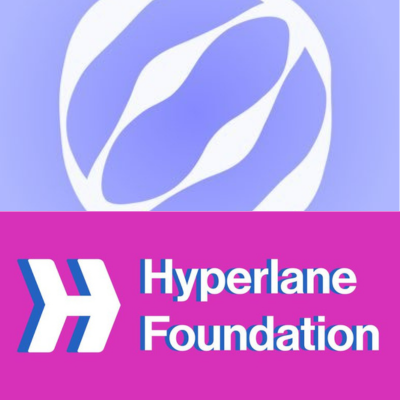The Hyplane stHYPER Incentive Program: A Beacon Amid Airdrop Controversies

Despite some controversy around the Hyperlane airdrop, the stHYPER incentive program stands out as a promising model for sustainable, community-driven blockchain growth.
Hyperlane, an interoperability protocol connecting over 140 blockchains, has captured attention with its visionary approach to user engagement.
While the airdrop faced logistical challenges, the stHYPER program offers a more structured, long-term mechanism to align user incentives with protocol expansion.
This article explores:
- The mechanics behind stHYPER
- Hyperlane’s token supply strategy
- Lessons that Mitosis can draw for its own ecosystem growth
How the stHYPER Incentive Program Works
A New Approach to Staking
The stHYPER program is a core part of Hyperlane’s tokenomics.
It rewards users for staking HYPER tokens to help secure the network validators.
Key features:
- Liquid staking model: stHYPER (Staked HYPER) is a liquid receipt token, allowing users to stay flexible while earning staking rewards.
- HyperStreak multiplier: Users who stake from day one (April 22, 2025) can achieve a maximum 1.6x multiplier on future rewards if they continuously hold stHYPER.
This model incentivizes sustained participation rather than short-term speculation — crucial for building strong cross-chain infrastructure.
Related reading: Explore how Mitosis Expedition rewards long-term liquidity commitment.
Expansion Rewards: Fueling Network Growth
The stHYPER program ties into Hyperlane’s Expansion Rewards framework, which allocates 57% of the total HYPER supply to users based on network usage (mainly via Interchain Gas Payment (IGP) fees).
- 85% of rewards go directly to end-users
- 15% retained by application teams (adjustable split)
Chains adopting Hyperlane as their canonical bridge also receive increased reward weightings, driving deeper ecosystem integration.
This structured, programmatic rewards model contrasts sharply with random airdrops and builds long-term community ownership.
Learn more about Hyperlane’s Expansion Reward Program.
Hyperlane’s Token Supply Strategy
Balancing Airdrop and Future Incentives
Token allocation highlights:
- 7.5% (75M HYPER) assigned to the Expansion Drop (retroactive airdrop for early users who sent ~8.6M messages before Feb 28, 2025).
- 57% reserved for ongoing rewards through programs like stHYPER over the next 4 years.
Anti-Sybil measures were introduced:
- Negative multipliers applied to flagged wallets
- Wallets with <$5 in network fees excluded
Any unclaimed airdrop tokens are recycled into future incentives, strengthening Hyperlane’s commitment to sustainable distribution.
Read more about Hyperlane’s Airdrop Overview and Sybil Protection.
Addressing Airdrop Complaints
Despite its thoughtful design, Hyperlane’s airdrop faced backlash for:
- Confusing eligibility and snapshot deadlines
- Technical issues with the claim portal
- Criticism around Sybil detection fairness
However, Hyperlane maintained credibility by:
- Publishing its Sybil scoring methodology
- Undergoing audits by firms like Trail of Bits and Zellic
- Maintaining transparent communication throughout
These actions show how proactive transparency can soften criticism, a valuable lesson for any emerging DeFi project.
What Mitosis Can Learn from Hyperlane
Incentive Design: Beyond the Airdrop
Mitosis, focused on cross-chain DeFi liquidity, already runs community-driven campaigns like Mitosis Expeditions, which massively boosted TVL for assets like weETH.
However, Mitosis could enhance these programs by adopting:
- Multiplier-based incentives for liquidity providers who participate over longer periods (similar to HyperStreak).
- Liquid staking models that allow flexibility while rewarding loyalty.
These steps could align with Mitosis’s broader goal of sustainable, programmable liquidity.
Learn more: See how Mitosis governance mechanisms empower users through EOL voting.
Managing User Expectations
Hyperlane’s experience shows that even the best-designed airdrops can backfire without:
- Clear communication
- Robust Sybil protection
- Flexible timelines for claims
Mitosis, which has not yet announced token distribution details, should preemptively design a transparent, fair user rewards program to maintain trust and momentum.
At the same time, launching initiatives like Matrix Vaults can offer additional ways for users to earn meaningful rewards while deepening engagement.
Conclusion: A Blueprint for Community-First Growth
The Hyperlane stHYPER incentive program represents a forward-thinking model for blockchain projects seeking long-term, sustainable community growth.
While the airdrop execution faced bumps, the structured staking rewards, transparent communications, and liquid participation models stand out as examples to emulate.
Projects like Mitosis can draw powerful lessons by focusing on:
- Programmatic rewards
- Sustained user engagement
- Proactive community communication
By applying these principles, Mitosis has the opportunity to set a new standard for cross-chain DeFi liquidity markets and community ownership.

Comments ()